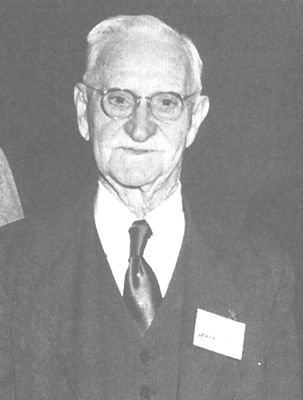| |
The Bravest Manby
Bob Bowman | |
Those
who lived in Lufkin during the
Depression years knew Homer Garrison, Sr., as a kindly, genteel man who gave away
pennies to children and felt he had cheated them “because I always got a two-bit
smile.”
Somehow, it wasn’t the image you expected for the bravest man
in the world, which is the way his son, Homer Garrison, Jr., a man once considered
as J. Edgar Hoover’s replacement, felt about his father.
The younger Garrison,
who rose to prominence as the Director of the Texas Department of Public Safety
and the Texas Rangers, was a boy when his father operated a store at Frankston
in Anderson County.
A murder had occurred in the community and the killer
had barricaded himself inside a building, armed and ready to shoot anyone who
came within firing range. The elder Garrison volunteered to help capture the fugitive.
He walked into the building unarmed. In a few minutes, he had smooth-talked the
man into surrendering. Homer, Jr., grew up convinced no one could match his father’s
courage and never questioned or challenged his father’s authority. |
 |
|
During his years at Frankston, Homer Garrison, Sr., persuaded a killer to surrender
after taking a prisoner in a local store. |
That is, until the
late 1920s when Angelina County Sheriff A.B. Youngblood asked him to become a
deputy. The idea intrigued Garrison, and he asked for his father’s consent.
“Now,
son,” the elder Garrison admonished his son. “I don’t know of a deputy sheriff
who ever amounted to anything. You’ll just wind up as a sawmill watchman somewhere.”
Despite
his father’s admonition, Homer, Jr., took the job of deputy at the age of 19 in
Lufkin.
In 1929, he became
a state license and weight inspector and in 1930 became one of the first thirty
patrolmen to form what is now the Texas Highway Patrol. That launched his law
career in Texas. By 1937, he was the director of the Texas Department of Public
Safety.
At the end of World
War II, General Douglas MacArthur asked Garrison to organize a police organization
in occupied Japan, but he declined. President Dwight Eisenhower also considered
Garrison as a successor for then-ailing J. Edgar Hoover, the head of the Federal
Bureau of Investigation. The venerable Hoover, however, recovered and Garrison
again remained in Texas.
When Garrison died
in 1968, and was buried in the Texas State Cemetery in Austin,
the DPS was entrenched as one of the most efficient police organizations in America.
For most of his career, Garrison was an unrelenting nemesis of organized
crime. He once told a friend he suspected his picture, like those of criminals
hanging in the post office, decorated the shooting range of every triggerman in
Texas.
Garrison, usually known as Colonel
Garrison because of the rank he attained in the Texas Highway Patrol, defended
Texas law and order for nearly 50 years without firing a gun.
But one
of the Garrison family’s proudest moments came when new federal building was named
the Garrison Building by an act of the U.S. Congress. The building stands a block
away from another Lufkin landmark,
the Pitser Garrison Civic Center, named for his brother, an attorney and Lufkin’s
mayor for 18 years.
Whenever Colonel Garrison came home to Lufkin
to visit his family, he often took a devilish delight in telling his father, “Dad,
things aren’t going too good. I may have to become a sawmill watchman after all.”
Bob
Bowman's East Texas
March 2, 2009 Column
A
weekly column syndicated in 70 East Texas newspapers
Copyright Bob Bowman |
|
|